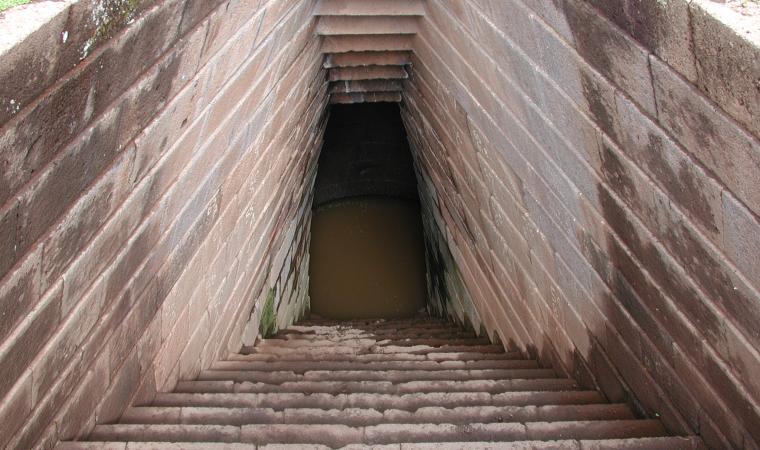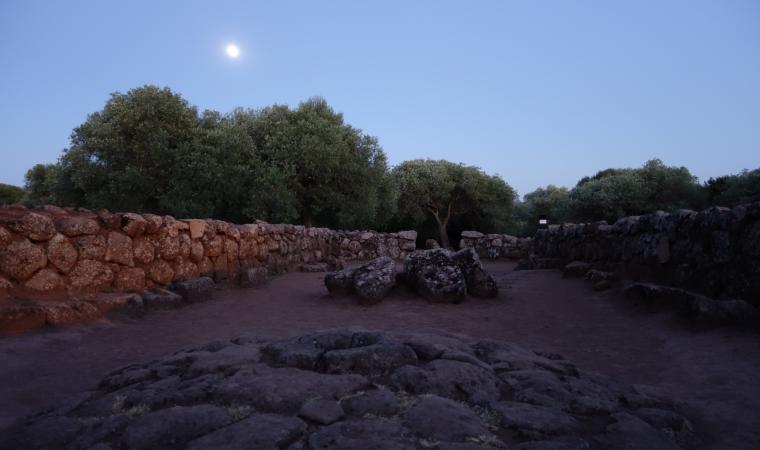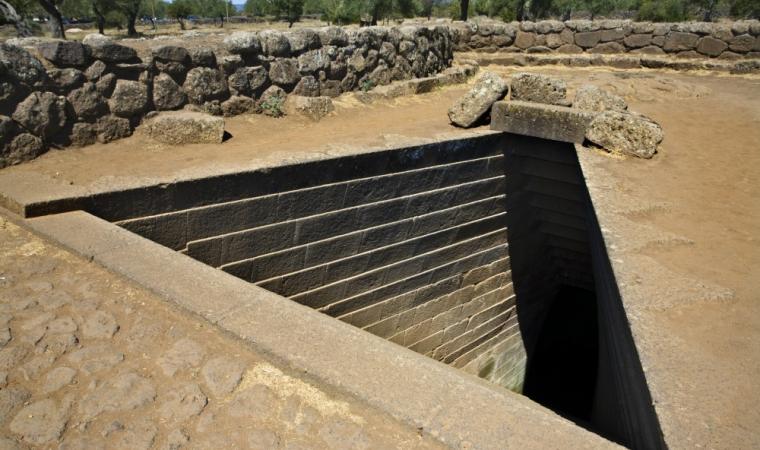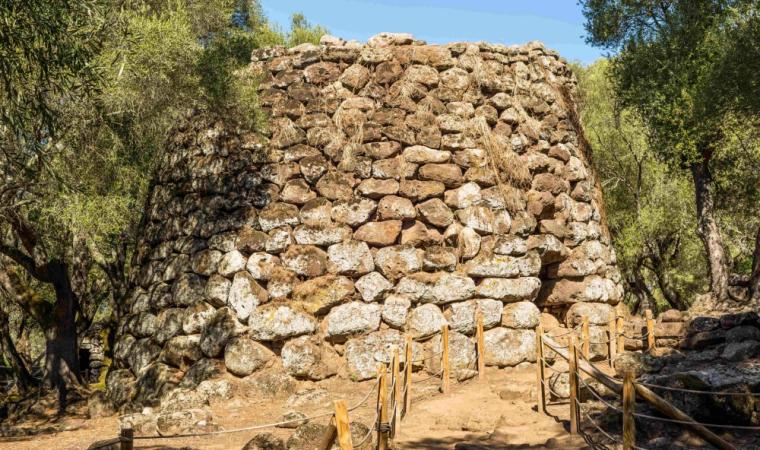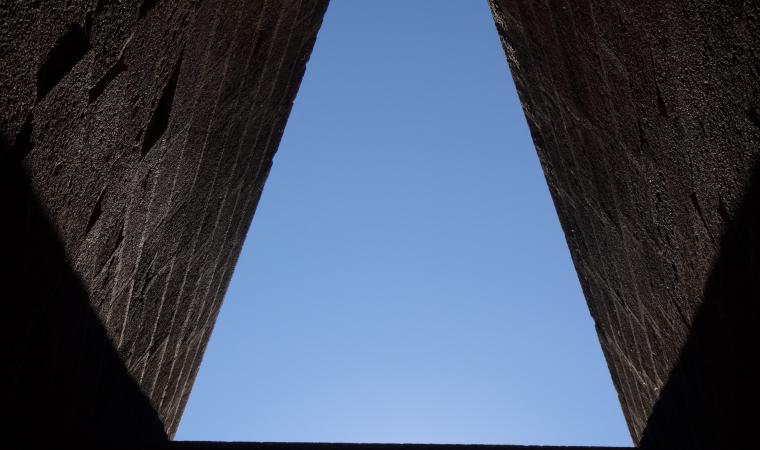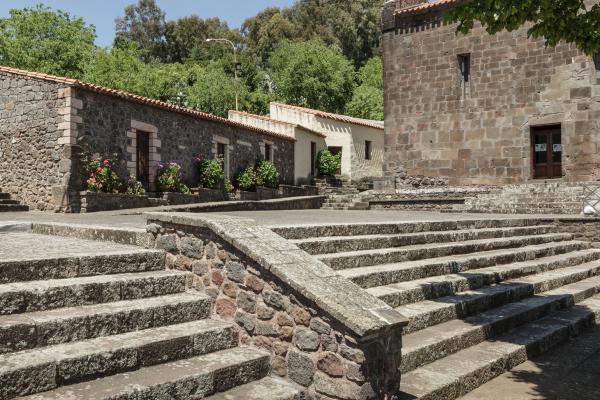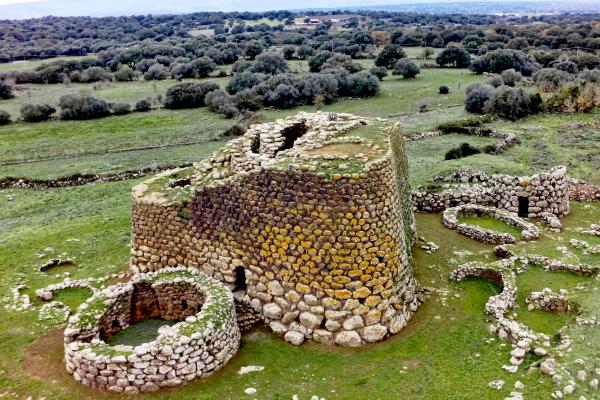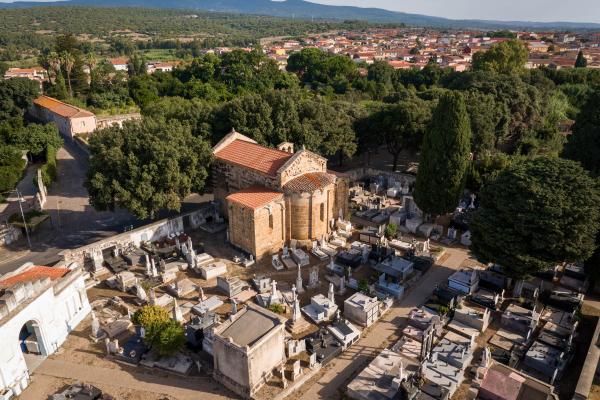"It represents the peak of water temple architecture. Its proportions are so balanced (...), its geometric composition so exact (...), so rational (...), that it doesn't seem possible (...) for it to have been built around the year 1000 BC". This is how the 'father' of Sardinian Archaeology, Giovanni Lilliu, describes the well temple of Santa Cristina, the sacred nuragic area par excellence, built on a basalt plateau in the territory of the nearby town of Paulilatino. The name derives from the adjacent rural church of Santa Cristina, dating back to the 11th century, of which only part of the apse remains, along with 36 muristenes, characteristic houses that still host the pilgrims during the celebration of novenas in mid-May in honour of the saint and at the end of October in honour of the Archangel Raphael.
The archaeological site is located a few dozen metres from the medieval Christian church, surrounded by green olive trees. It is divided into two nuclei: in the first you will find a well temple dating back to the final Bronze Age (12th century BC), set in a sacred enclosure (themenos) shaped like a 'lock'. Built with finely worked basalt blocks using accurate techniques, the temple is a jewel with perfect geometric shapes.
Inside it is formed by a vestibule, a staircase and a room covered by a tholos (false dome), built in concentric rings. The stairwell has a trapezoidal section with 7 metre-thick joining walls. The 25 steps gradually narrow up to the cell, covered with mirrored lintels: the effect is of an 'inverted staircase'. As you go down the stairs, you will feel a restless sense of descending into the past. The site was dedicated to the water cult, which attracted nuragic people from all over the island. The water reaches a tank, dug into the rock, from a perennial spring, allowing the level to remain constant all year round. The temple was probably originally covered, and the raised part would have been similar to that of the sacred well on Tempiesu at Orune.
Outside the enclosure lie the remains of the nuragic settlement. You will notice the round 'meeting hut', with a diameter of ten metres, paved with pebbles and equipped with a circular seat, and another dozen rooms, perhaps the homes of priests and the market shops that accompanied the religious solemnities. The sanctuary may also have been a place of astronomical observation, and it is worth visiting at night, with caution, to see the full moon reflected in the waters of the well. Middle-Eastern bronzes from the beginning of the first millennium BC, bronze fibulae (9th century BC) and Phoenician gold jewellery, found by the excavations, testify to its long cultural and commercial vitality.
200 metres away, along a path, you will come across the second nucleus including the Santa Cristina nuraghe, much older than the sacred well, dating back to the Middle Bronze Age (15th century BC). It is a single-tower nuraghe with a simple, circular shape, currently six metres high and 13 wide. It has a short corridor that leads into the main chamber covered by an intact vault, with three subsidiary cells. Around it lie the remains of a large village, initially nuragic, and later inhabited in various periods, enclosed by a fence. Three elongated huts remain (from the historical period).
The well temple of Santa Cristina represents the most impressive and refined example of nuragic religious construction techniques, as well as the peak of Paulilatino prehistoric architectural expression. The town, about thirty kilometres from Oristano, is famous for its ancient remains: domus de Janas, dolmen, menhir and as many as 110 nuragic sites, among which are the Battizzonis and Lugherras nuraghes, both with a keep (central tower) surrounded by a trilobed bastion. The second also has an arch with four other towers and, nearby, a Giants' tomb with a rare quadrangular stele. In the Punic-Roman period a temple was erected to Demeter and Kore on the top of the nuraghe. Votive lamps (lugherras) were found during the excavations. The Giants' tombs of Goronna are also worth visiting: one of them is 25 metres long, among the largest of the island. A few kilometres away, in the territory of Abbasanta, stands another symbol of the nuragic age, the Losa nuraghe.



